The Soft Animal of Your Body
Loves what it loves: revelations from a section hike of the Allegheny Trail
Mist unfurls gauze-like across the ridge. It smudges the golden glint of a beech stand, condenses to an impenetrable shroud in the protected notch of a holler, and takes my breath away. I am suspended in this misted shroud, somewhere miles along the Allegheny Trail. I haven’t had cell service for days. I’m all alone. Now, with this ridge-top cloud swirling around and through me, I feel outside of time and incorporeal as the fogged-in forest.
Heightening that sense are the far-away wails from a locomotive. Plaintive and hollow, the peal of this train ricochets off ridges from down on the railroad where it hugs the hem of the mountain. The sound diffuses through the mist, ghost-like. Indeed, it is a sound from another time—an ancient Shay locomotive from a bygone era of economic boom and ecological devastation due to unrestrained timbering in these mountains during the late nineteenth and early twentieth centuries. I linger just a moment longer, compelled by these sober memories and the haunting sense of mystery here, before shouldering my pack and hiking further along the ALT.
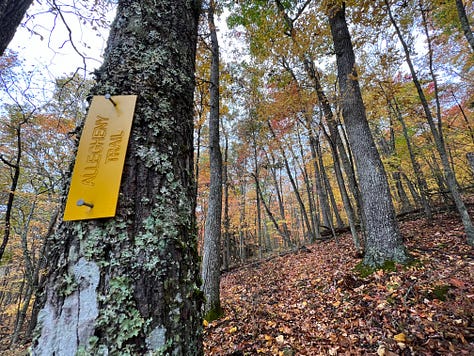
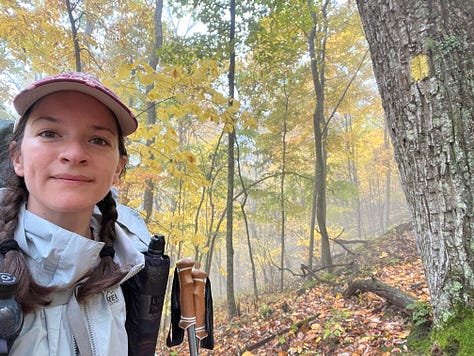
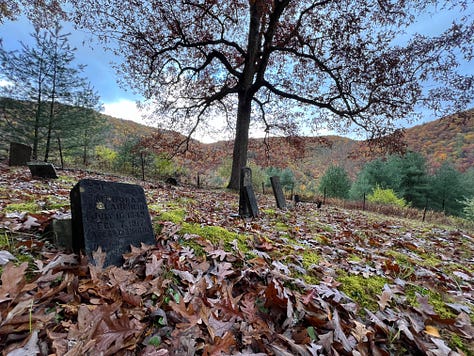
I couldn’t shake the feeling during those, and countless other, moments that I had unwittingly set out on the most quintessential fall backpacking trip. Over the course of four days this past week, I hiked a 45-mile section of the Allegheny Trail (ALT) and experienced all manner of eeriness and delight. This was the sister trip of my springtime trek—essay linked below, for anyone seeking a recap on that experience/the ALT—from Gaudineer Knob north to Canaan Valley. Only this time, upon departure from that same scenic, old growth spruce area, I turned my feet south.
A change in direction wasn’t the only variable in this recent section hike. The seasonal contrast between late spring/early summer and late autumn/winter in the West Virginia woods was, as you might imagine, palpable. Where once the forest was a soothing swath of greenery, now it shimmers in a scintillating, prismatic dance of light and color. We all know how a single tree, say a maple, can stop us in our tracks with its vivid bloom of orange-bright leaves. The color is so intense, common words like “orange” don’t suffice—those leaves are dyed with a hue that is something to savor, like a tender apricot or a steaming sweet yam; they dazzle as if lit from within, like lava or polished citrine; and they beckon with a visceral perfume, like marigold, saffron or turmeric. The effect is immediate and paralyzing, all because of that one tree.
Imagine hours spent moving through an entire forest aflame in this way! The impact does not diminish or dull from the constant exposure; it only compounds. Depending on where I was on the trail—a ridge-top saddle, or a closed-in nook of a holler—the tree populations shifted from crimson oak to gold beech to apricot-marigold-citrine maple. Continually, the sense of awe was renewed at every turn of the trail. Even the ground, coated as it was in leaf-fall, vibrated with color. This had the dizzying effect of a kaleidoscope or fun-house mirror: what was down was also up and, when the brisk October winds gusted, also swirling all around.
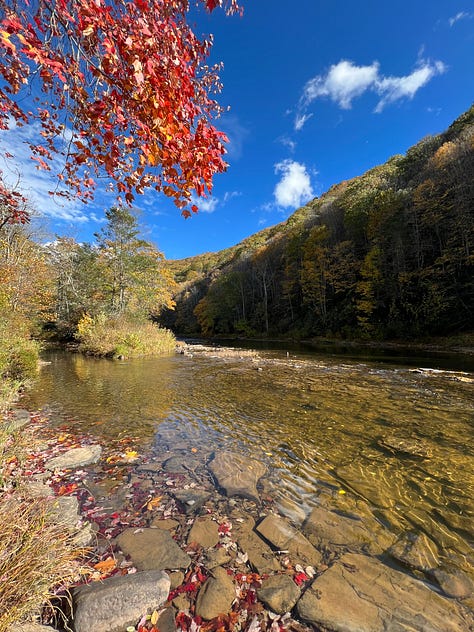
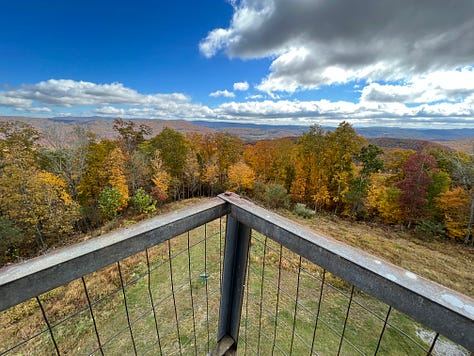
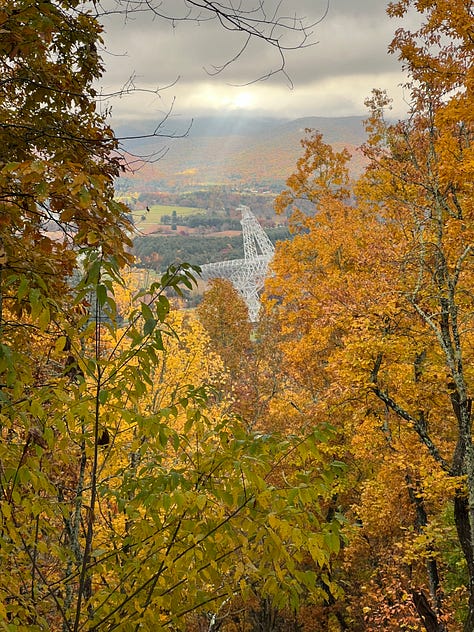
Multiple times a day, my breath caught in my throat at so much wonder, so much remote and therefore hidden beauty. This hike took me through the Greenbrier District of the Monongahela National Forest, from the highest point on the ALT at Gaudineer Knob down to rail trails along the Greenbrier river. It followed those rail trails through the one-horse towns of Durbin and Cass, relics of the area’s booming timber & railroad past. The ridge-line hiking even skirted directly behind Green Bank Observatory, with its gargantuan, scaffolded satellite like something from a sci-fi film tucked incongruously among the mountains. It all made for some staggeringly gorgeous trekking, in exchange for a haunting feeling of isolation. I saw no other hikers and had no cell service on the trail (due to the National Radio Quiet Zone that surrounds Greenbank and also just, West Virginia mountains.) Effectively, I was in my own glorious echo chamber.
Somewhat unexpectedly, that sense of isolation and loneliness hit me swiftly on this trip. Experiencing such overwhelming autumnal beauty alone was bittersweet. Always there was the impulse to seize an arm—Mike’s, or my best friend Kathryn’s, my backpacking buddies—and exclaim, “look at that!” I had to remind myself that it was enough to take in the wonder myself for later sharing. That, in fact, was the whole point of this trip after all: to fill my cup and bolster my sense of empowerment & independence. After several months where I’d felt frayed around the edges emotionally and otherwise, backpacking solo was my go-to cure-all.
So it was surprising for me—a veteran almost-thru hiker and general introvert—to feel a knee-jerk loneliness on this trip. Without my conscious realizing, I’d become someone whose baseline is connection rather than lonerism (incidentally, a fantastic Tame Impala album.) Up until this point, backpacking was my personal retreat. Whether in my first trips through Dolly Sods and Shenandoah National Park four years ago, or during the 1,650 miles of thru-hiking the Appalachian Trail, I always felt a sense of unequivocal rightness. When not much else made sense in my life, I felt like I belonged out there. And I almost always went alone.

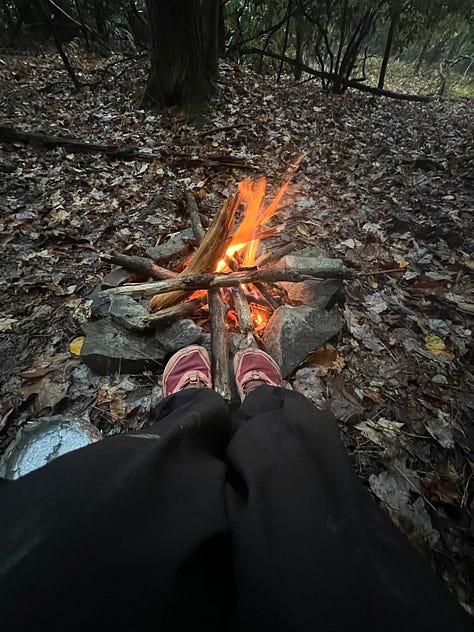
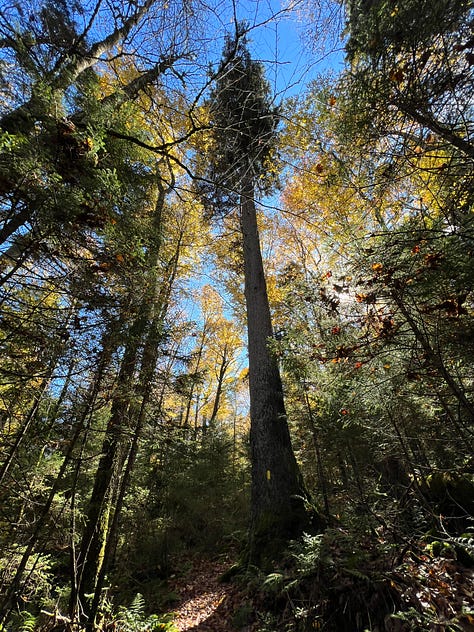
Fast forward to this hike along the Allegheny Trail. As I walked the rollercoaster of ridgelines and emotions—bliss and wonder, fatigue and loneliness—I found myself squaring up to certain truths. I seem to have, as the saying goes, created a life from which I don’t need to take a vacation. Quite the opposite, in fact, I dearly missed the people, pets, and features of my life as it is now. Backpacking is no longer an escape from my daily life to remember who I am and where I belong. Nor is backpacking a quest to uncover some more, better, or essential self. Thru-hiking the Appalachian Trail, while a massive undertaking and revelatory in countless ways, didn’t alter my DNA. I am, in fact, basically the same person every time I exit the woods as when I enter.
I find myself chuckling at this whole existential runaround. When I am really honest about the heart of it, backpacking for me is pretty basic—I love being outside, and I love the simplicity and exposure and empowerment. I love the quiet of being with nature. Somehow these simple beginnings became a compulsion—I have to get out hiking—and further down the road, strangely entangled with my identity. I couldn’t just enjoy backpacking; I was a thru-hiker. Since stepping off the Appalachian Trail two years ago, everything has been in reference to that grand experience. As it goes with most significant endeavors, the implicit question always felt like, what next? How do I “top” that, or build upon it? Always and only ever thinking about up and forward (heaven forbid I simply pause, redirect, or backtrack.)
This is probably a natural part of processing, but I think I’m finally finding myself planted in an altogether new chapter. In this chapter there is more freedom and less identification; more exploration and less analysis; more enjoyment and less white-knuckle-clenching. I am gratified to know that I am a creature of depth who requires regular doses of focus, commitment, and endurance. I function best, and feel closest to living out my purpose, when my body and mind are allowed to dive below superficialities and daily obligations to swim in quieter, murkier waters. This flow state happens while backpacking, certainly. But it happens here on the page, too, if I can wrangle my distracted mind long enough. And while several days of it in a row are nice, I can function perfectly well with just an hour or two every couple days.
As it turns out, after several days of virtually no cell service and very little human interaction, even this sensitive introvert started to feel lonely and bereft. It’s taken me literal years to parse out the finer points of this revelation, but craving a sensory reprieve and meaningful connection are not mutually exclusive. You don’t have to be a monk to touch spiritual wonder, nor a thru-hiker to enjoy backpacking, and you don’t have to be a gregarious party animal to participate in the human dance of belonging. Surprise, surprise. As the revered Mary Oliver reminds, “you only have to let the soft animal of/your body/love what it loves.”
(And, by the way, after hiking a combined 100 miles of her mountainous spine—I love me some West Virginia.)
You do not have to be good.
You do not have to walk on your knees
for a hundred miles through the desert repenting.
You only have to let the soft animal of your body
love what it loves.
Tell me about despair, yours, and I will tell you mine.
Meanwhile the world goes on.
Meanwhile the sun and the clear pebbles of the rain
are moving across the landscapes,
over the prairies and the deep trees,
the mountains and the rivers.
Meanwhile the wild geese, high in the clean blue air,
are heading home again.
Whoever you are, no matter how lonely,
the world offers itself to your imagination,
calls to you like the wild geese, harsh and exciting -
over and over announcing your place
in the family of things.
-Mary Oliver, Wild Geese




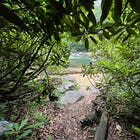
Andrea! Your writing is magical! I'm so glad I found your Substack link. Thanks for sharing these words with such care & intention.